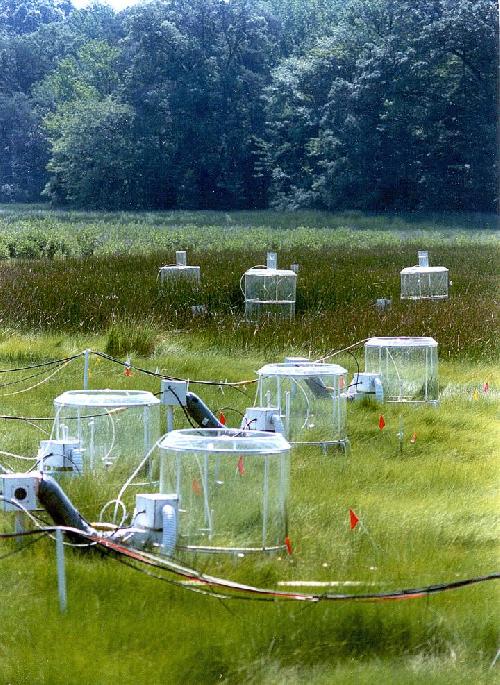Not much is predictable about climate, despite assurances by politicians and activists meeting in Paris, and one claim that global warming skeptics use - that more CO2 is good for plants - is also correct but also not predictable.
Instead, inter-annual variation in climate has stronger effects on predators such as spiders than populations of their detritivorous prey, such as isopods, which could lead to changes in food chain length, which can in turn influence decomposition and plant growth. These findings emphasize the importance of combined approaches that consider food webs and physiological processes to understand the consequences of global climate change.
Carbon dioxide emissions have raised the atmospheric CO2 concentration from 280 to approximately 400 parts per million (ppm), which had been called a 'point of no return' by climate scientists and activists. But it was also known that a higher CO2 concentration stimulates photosynthesis and growth of wetland plants, which absorb more However, there is debate as to whether wetland conservation might therefore be an effective strategy to absorb excess CO2 and mitigate future climate change.

Examining plant communities on a marsh in Maryland that is dominated by saltmeadow cordgrass (Spartina patens, in the foreground) and American bulrush (Scirpus olneyi, in the background). Credit: Photo: Dr. Bert G. Drake / Smithsonian Environmental Research Center (SERC)
The longest running of these experiments was initiated in 1987 by Professor Bert Drake in brackish wetlands on the Atlantic coast of the US state of Maryland. The transitional zone between salt and fresh water was chosen as these highly productive marshland areas provide many essential ecosystem services, and are threatened in many regions by human land development.
The Smithsonian Environmental Research Center is examining plant communities on a marsh that is dominated by American bulrush (Scirpus olneyi, a C3 sedge) and saltmeadow cordgrass (Spartina patens, a C4 grass). Two different types of plants, therefore, are being evaluated. Photosynthesis of C3 plants, which include over 95 per cent of plant species on earth (e.g. trees), are thought to be more sensitive to changes in atmospheric CO2 than C4 plants which include crops such as sugar cane and corn. An experiment was conducted in several test chambers to examine the influences of elevated CO2 and on growth of C3 and C4 plants. At 365 ppm, the CO2 concentration in some chambers was the same as that found in the atmosphere today.
The CO2 concentration was almost doubled to 705 ppm in other chambers, to simulate a future scenario.
The team evaluated the biomass and growth of the plants, not only to elevated CO2, but also experimental manipulation of detritivores such as isopods and their predators such as Pardosa littoralis spiders. These invertebrate food chain treatments were chosen based on a six-year field study where invertebrate populations were monitored.
"The field study showed strong variations in detritivore and spider populations, whereby the top-level predators were the most sensitive to climate variation. " commented Dr Jes Hines from the German Centre for Integrative Biodiversity Research, whose study was able to demonstrate a new mechanism which helps explain the inter-annual variations in plant growth when CO2 concentrations are elevated.
In the case of American bulrush, biomass production was enhanced by the presence of detritivores especially in elevated atmospheric CO2 concentrations. These findings represent an important step in illustrating the connections between climate, the food chain and biomass production in the wetland ecosystem.
"The study emphasized the importance of viewing the ecosystem in its entirety rather than looking at sub-divided compartments," stressed Professor Nico Eisenhauer from the iDiv and Leipzig University. Carbon dioxide is just one of many variables. Besides CO2, the sensitive wetland ecosystem is also affected by nitrogen deposition, salinity, and precipitation.





Comments